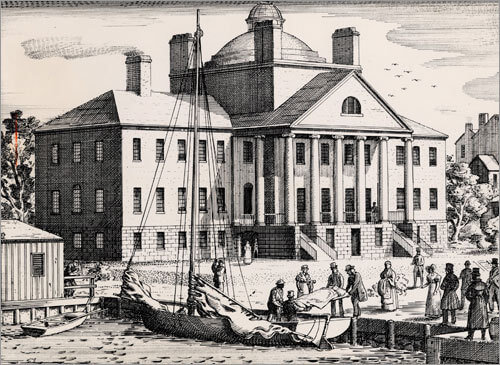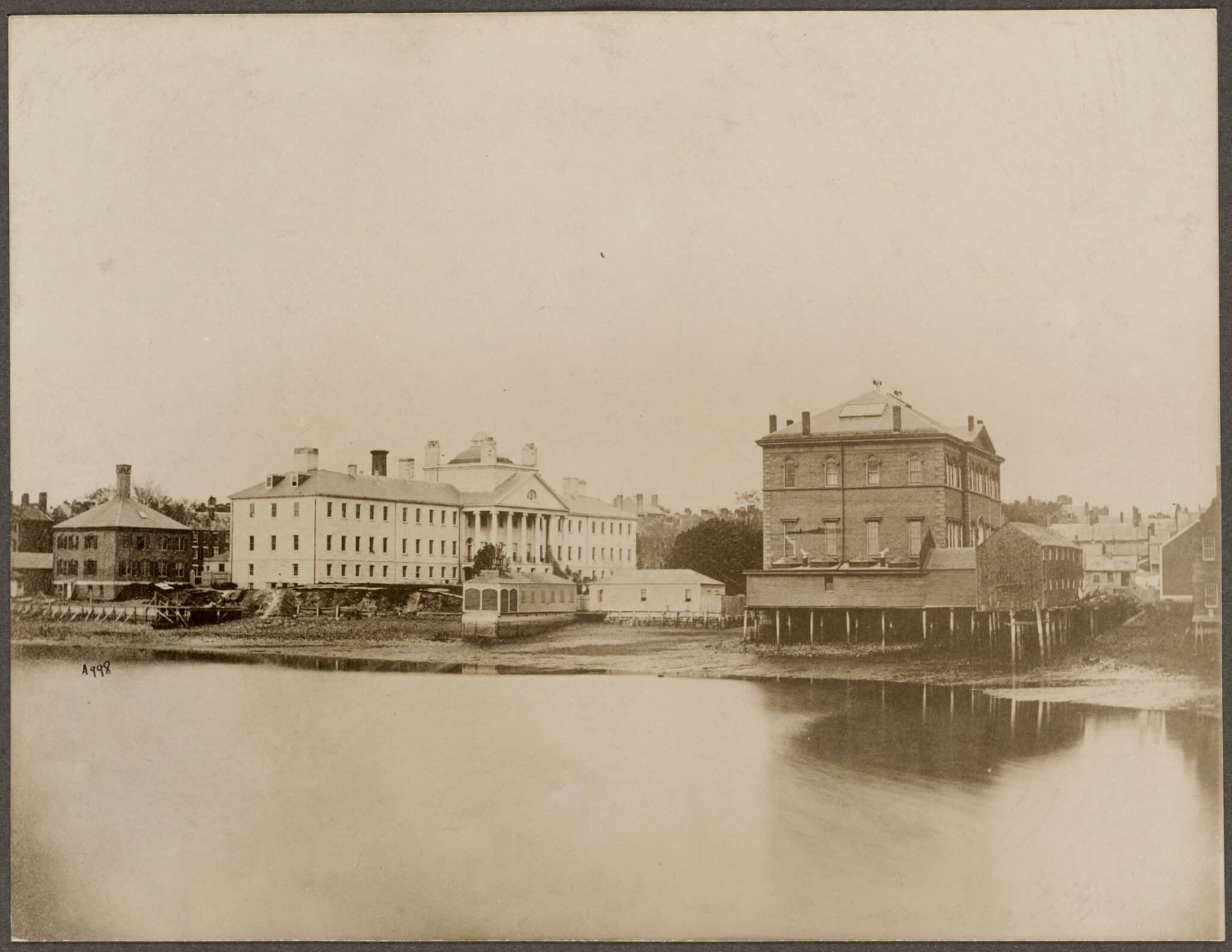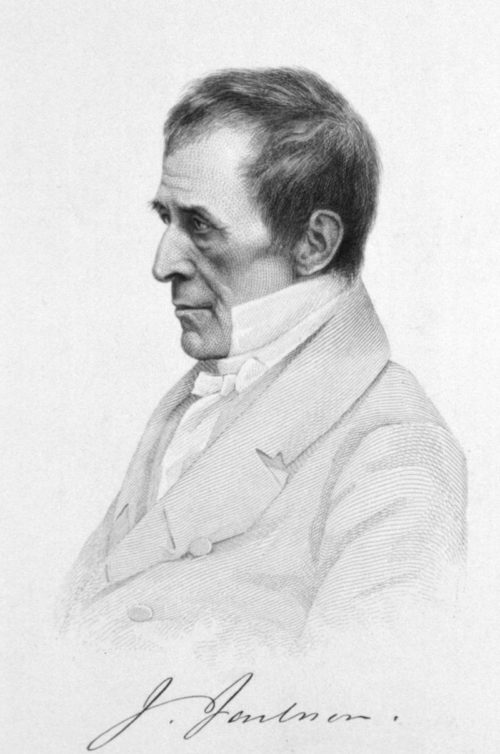The Many Founders of Mass General Hospital
Massachusetts General Hospital was built in the early nineteenth century on four acres of land in the old West End called Prince’s Pasture. Many doctors and prominent citizens of Boston can be counted among its founders.
The first building of the Massachusetts General Hospital, for which construction was completed on September 1, 1821, was built upon a four-acre section of the old West End called Prince’s Pasture. The building was designed by Charles Bulfinch, the first American-born architect who also designed many other buildings in the West End. The Trustees of the Hospital purchased the land on Prince’s Pasture in 1817, and the Bulfinch building’s cornerstone was laid on July 4, 1818. Abel Bowen recalls in Bowen’s Picture of Boston (1829) that a grand ceremony accompanied the cornerstone, set down “in the presence of many persons of great dignity in public life, and of a numerous assemblage of citizens.” Bowen explicitly credits the land previously called Prince’s Pasture as part of the “west end of Boston,” as did J.C. Meyers in his Sketches on a Tour Through the Northern and Eastern States, the Canadas & Nova Scotia (1849).
The first patient admitted to Mass General Hospital on September 3, 1821 was a saddler (someone who makes and repairs saddles) who contracted syphilis in New York. Although the Trustees of the hospital originally acquired a Charlestown estate in 1816 that became McLean Hospital (presently McLean Hospital in Belmont), the Bulfinch building was at the center of MGH’s official opening. There were previously just two general hospitals in the United States, in New York and Pennsylvania. MGH existed to serve the entire public, while previous institutions such as the Boston Dispensary or Charlestown’s marine hospital served only the poor and sailors respectively.
Massachusetts General Hospital, which remains a centerpiece of the West End today, can claim many founders in its history. Rev. John Bartlett, chaplain for Boston’s Almshouse, was part of an early fundraising campaign bringing doctors and citizens together. After the Massachusetts legislature gave a charter for MGH in 1811, fundraising brought in donations of many varying amounts (and at one point, a very large pig was donated). Fundraising was temporarily sidelined by the War of 1812, but the war did not ultimately stop the hospital from receiving the resources necessary to its inception.
Dr. John Collins Warren joined the fundraising campaign when he co-wrote an appeal in 1810 with Dr. James Jackson. Both Warren and Jackson were professors at the Medical Institution at Harvard (Harvard Medical School), and they argued that medical students in New England needed a training hospital closer to their place of study than Philadelphia. They implored readers to consider that Harvard students would find it “impossible to learn some of the most important elements of the science of medicine, until after they have undertaken for themselves the care of the health and lives of their fellow-citizens…” MGH had since become the teaching hospital for Harvard medical students once it opened. Warren later participated in the first public demonstration of surgical anesthesia, held in the hospital’s Ether Dome (a surgical amphitheater), in 1846. The Trustees of the hospital, who printed a book of letters they received from the public in 1816, included Josiah Quincy III, former US House Representative who served as Harvard University’s president from 1829-1845. Another trustee was Thomas H. Perkins, a wealthy merchant and slave trader whose charitable giving helped found MGH in addition to the Boston Athenaeum and the Perkins Institute for the Blind.
MGH continues to use the original Bulfinch building today, and the Ether Dome became a Registered National Historic Landmark in 1965. As Massachusetts General Hospital continues to serve the public, the hospital has had to negotiate its expansion with the history and heritage of what remains of the old West End. Duane Lucia, the executive director of the West End Museum, wrote in 2019 against MGH’s plans to build a Clinical and Campus Services Building because it would entail demolishing three historic West End sites: Winchell Elementary School, the West End House building, and a tenement on North Anderson Street. The proposed building remains under review by the Boston Planning & Development Agency, and it was last addressed in a Boston Civic Design Commission presentation on December 15, 2020.
Article by Adam Tomasi
Source: Massachusetts General Hospital, “A Narrative History of Mass General”; William Bennett, “The Genealogy of Mass General” (1984); Mass Moments; U.S. National Library of Medicine; J.C. Myers, Sketches on a Tour Through the Northern and Eastern States (1849); Abel Bowen, Bowen’s Picture of Boston (1829); Duane Lucia, “Don’t destroy what remains of Boston’s West End” (2019); Boston Planning & Development Agency; Russell Museum










